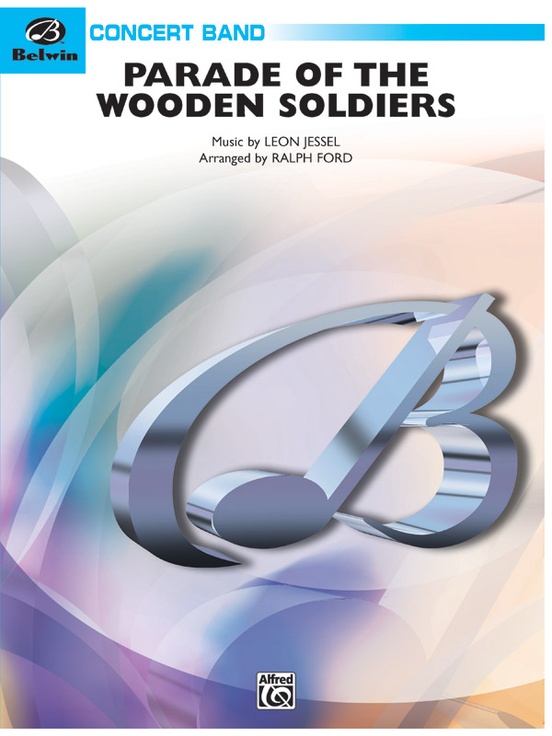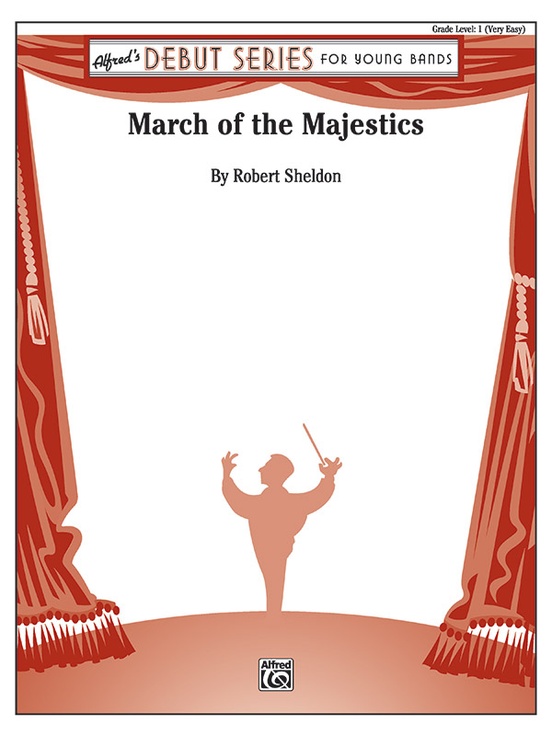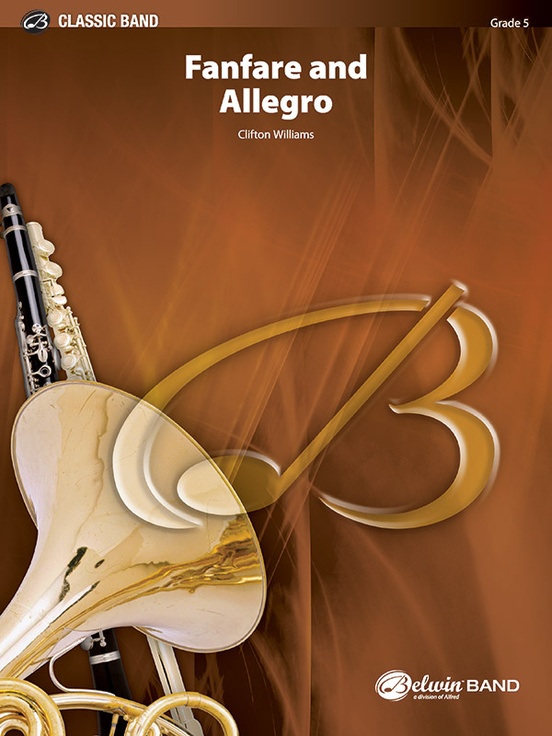Results
-
 £32.95
£32.95TUBA CONCERTO (Gregson) (Tuba/Concert Band) Extra Score - Gregson, Edward
Extra Score only. The concerto is in three movements, following the usual quick-slow-quick pattern: Allegro deciso, Lento e mesto, Allegro giocoso. The first has a sonata form shell with two contrasting themes, the first rhythmic in character, the second lyrical. There is a reference made in the development section to the opening theme of Vaughan Williams's tuba concerto, but this merges into the other material in the development section. The second movement unfolds a long cantabile melody for the soloist, which contrasts to a ritornello idea. The central climax of the movement triumphantly heralds the main theme from the band. The last movement is in rondo form, alternating the main theme with two episodes. The first of these is a broad sweeping tune, the second is jazz-like in style. After a short cadenza, reference is made to the opening of the concerto, and the work ends with a triumphal flourish. Duration: 18 mins.
Estimated dispatch 7-14 working days
-
 £62.95
£62.95Parade of the Wooden Soldiers
The parade begins with the percussion section at a distance while the flutes introduce the traditional theme. The wonderfully innovative countermelodies interwoven with the conventional theme are certain to have your listeners on the edge of their seats. With a grand flourish, the parade ends while boosting holiday spirits for all. Choose this sparkling interpretation of this classic holiday march on your winter concert. (2:00)
Estimated dispatch 3-5 working days
-
 £48.95
£48.95March of the Majestics - Robert Sheldon
An excellent selection for concert, contest or graduation ceremonies, is a bold and stately processional march, full of dignity and character. The opening fanfare leads to a majestic melody that first appears in the upper voices, and later played by the lower brass and woodwinds. The return of the original fanfare ends the piece with a regal flourish. This title is available in MakeMusic Cloud.
Estimated dispatch 3-5 working days
-
 £92.50
£92.50Fanfare and Allegro - Clifton Williams
This brilliant work was the first composition to be honored with the Ostwald award for original band literature presented by the American Bandmasters Association in 1956. Beginning with a dynamic flourish leading directly into the allegro section, the familiar rhythmic intricacies enhance the impressive nature of the work. A monumental contribution to the literature. (6:17) This title is available in MakeMusic Cloud.
Estimated dispatch 3-5 working days
-
 £62.95
£62.95Mineola Waltz - John W. Hawd
Originally composed in 1890 by John W. Hawd, this Carl Strommen arrangement was scored for the centennial celebration of the Village of Mineola. The Algonquin term Mineola literally means a friendly and pleasant village. Mineola Waltz is a similarly pleasant work with a familiar-sounding melody and all of the flourish and panache of a distinctive waltz. This title is available in SmartMusic.
Estimated dispatch 7-14 working days
-
 £87.99
£87.99Crown Century - David Shaffer
Opening with a broad flourish from the upper brass and woodwinds, this truly outstanding prelude will make a powerful opener for any concert. Written as a 3-part rondo, the alternating sections are contrasting in both style and orchestration. Not technically difficult.
Estimated dispatch 7-14 working days
-
£106.95
Legacy of Honor - Larry Clark
This piece drives from the start with bold trumpet flourishes and interjections from the rest of the band. After the exciting first section, a lyrical second theme departs to something beautiful and lush in harmonic structure. The development section is based on the opening theme, eventually leading the piece back, followed by a dynamic brass flourish in the coda. A solid choice by a known composer for contests and festivals.
Estimated dispatch 7-14 working days
-
 £98.99
£98.99Ars Vitae - Larry Clark
Art is Life! This sentiment is abundant in this wonderful new work for concert band by Larry Clark. Full of flourish and thick brass writing harkening back to the days of Alfred Reed, Ars Vitae has everything you could want in a contest and festival work.
Estimated dispatch 7-14 working days
-
 £113.30
£113.30Moderate Dances - Angelo Sormani
This piece is a tribute to dance music, especially passionate, intense and meditative dance music. "Moderate Dances" is divided into three movements: a "Tango", a "Slow Waltz" and a "Bossa Nova". Each movement and each dance has its own particular characteristics but, when combined, these different rhythmic beats and times give the piece a feeling of completeness and uniformity. The Tango started to flourish in the suburbs of Buenos Aires in around 1880. There is still some doubt as to its origins, which may be Cuban (Habanera) but are probably African. It was most popular in Argentina and Brazil: here the male protagonist was originally the "gaucho" with his inseparable guitar, later to be replaced by the proud, elegant "compadre". By around 1910 the Tango had spread to Italy and France. New clubs opened, where the upper classes could watch and dance the Tango. Here the dance also underwent some rapid transformations. The exaggerated and extravagant gestures and body movements disappeared. Slow, gliding steps replaced the old rotational movements. The women's red ankle-boots and the partners "staring into each other's eyes" accentuated the erotic nature and sensuality of this dance. So much so that, in 1913, the German government banned soldiers from dancing the Tango. Those who broke the law were immediately discharged from the army. From a strictly musical perspective, the basic instruments were a flute, a harp (the diatonic harp typically played by the Indians of Paraguay) and a violin, or flute, guitar and violin or even clarinet, guitar and violin. These instruments were easy to transport, ideal for playing at parties, in the streets and in courtyards. The musicians played by ear, frequently improvising: there were no scores, no records, which is the main reason why it is impossible to trace the Tango back to its exact origins. However, the Tango's evolution (and growing popularity) was once again fostered by its fundamental ability to absorb "other" cultures, languages and sounds. And it was the arrival of the "bandoneon" (an accordion-like instrument that was invented in Germany and brought to Rio de la Plata by some immigrant), which replaced the flute, that marked the beginning of the Tango's huge success outside Argentina. A number of talented composers, above all the great Astor Piazzola (1921-1992), transformed the bandoneon from a simple accompanying instrument to a solo instrument that was to become the distinguishing feature of the 20th century Tango. The Slow Waltz originated from the Waltz, the typical dance of the Bavarian and Tyrolese peasants in the 1700s. It was composers like Johann Strauss, father and son, who carried the Waltz to its zenith in the 1800s, creating the sensual and melancholy yet joyful and charming dance we are all familiar with. When the Waltz first became popular in Germany, the members of respectable society were shocked at the closeness of the dancing partners, who had always previously danced apart. The main difference between the Waltz and Slow Waltz is that the latter has a slower, more expressive rhythm: the men wear tails and the women wear ball gowns decorated with beads and feathers and couples dance in graceful rotational movements. "Bossa Nova" is the title of the last movement in the piece. Jobim, the great Brazilian musician, described this musical genre as a combination of modern Jazz and Samba. Bossa Nova means "new wave". This was the name of the artistic and musical movement that evolved in Brazil in the late Fifties and was extremely popular throughout the Sixties. The songs are usually about love or social matters, drawing inspiration from the slums of Rio De Janeiro and the lives of their inhabitants. Bossa Nova, with its original compositions and the artistic talent of its musicians, also became hugely popular in the United States and Europe, and top Jazz musicians (Ella Fitzgerald, Stan Getz, Bob Cooper, Charlie Bird, Sonny Rollins, Dexter Gordon, Dizzy Gillespie) started to include Bossa in their repertoires.
Estimated dispatch 7-14 working days
-
 £71.50
£71.50Starburst - Mark Lortz
Starburst is dedicated to the Johnston County Eighth Grade All-County Middle School Band in Benson, North Carolina. Its a sparkling work that was specifically written to feature all sections of the band. Attention is immediately focused on the hard-driving full-ensemble introduction that moves into a feature for the woodwinds and horns. The trumpets then get the spotlight, followed by a brief woodwind interlude that transitions to the final recap to close with a resounding flourish.
Estimated dispatch 7-14 working days
